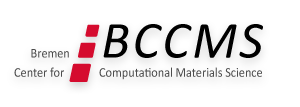Description
Correlated electrons in “synthetic” quantum matter, i.e. systems where fundamental electronic properties and correlation phenomena emerge beyond the atomic scale, has developed to a rapidly evolving forefront topic of condensed matter research. Example classes of correlated synthetic quantum matter include:
- Moiré superlattice systems such as twisted or lattice mismatched stacks of layered materials
- Spontaneously forming correlated superlattice systems as in charge density wave (CDW) materials and stacks thereof
- Strongly light-matter coupled systems particularly correlated materials in optical cavities
The experimental breakthroughs in controlling and vertical heterostructuring of 2d materials and particularly the observation correlated insulating and superconducting states in twisted bilayer graphene boosted the field of “correlated synthetic quantum matter”. Current hopes in the field range from the realization and steering of exotic quantum phases to better understanding of long-standing open problems in condensed matter theory such as electron correlation driven high-temperature superconductivity.
The above mentioned systems share three central common motifs, which define challenges to contemporary condensed matter electronic structure research but could be arguably also the basis for novel physical phenomena:
- Intertwining of correlations with topology
- Correlations of multiple degrees of freedom such as charge, spin and valley or light-matter coupled degrees of freedom
- Multiscale tunability from the atomic scale to moiré unit cell or cavity extents
These common motifs define overarching open questions and problems regarding the physics, the theoretical/computational modelling, and importantly the interplay of theory and experiment in the field of synthetic quantum matter, which the proposed workshop intends to address. The workshop shall focus on the following questions:
- What can we learn about long-standing problems in correlated quantum materials from new synthetic quantum systems?
How to boost Tc of superconducting materials (in reality)?
- Which new phenomena to realize and control with synthetic quantum matter?
Realizations and control of topological superconductors, spin liquids or other exotic states of matter in synthetic correlated quantum matter?
- How to model synthetic quantum matter?
Do we need new “drosophila” models? Where to go with “standard models” like the Hubbard model?
How to approach realistic modelling of synthetic quantum matter? How to address the challenges resulting from the interplay of multiple length and energy scales and multiple degrees of freedom?
- Theory vs experiment: what to calculate and what to measure for most meaningful and unambiguous comparisons in practice?
Synthetic quantum matter centrally employs “beyond-atomic” length scales to achieve novel kinds of tunability, which however leads to smaller energy scales than present in typical correlated electron systems like e.g. d-electron based high temperature superconductors. As a consequence, central experimental spectroscopic techniques like angular resolved photoemission spectroscopy become extremely challenging or sometimes even unfeasible due to energy resolution issues. How can available high resolution spectroscopies (e.g. optical, THz, transport, acoustic, scanning tunnelling spectroscopy) fill this “gap” and how to get the interplay of theory and experiment most insightful in this case?
With the workshop, our goal is to foster progress in the field by bringing together different materials modelling communities from ab-initio to non-perturbative many-body methods and phenomenological theories and leading experimentalists in the field.
